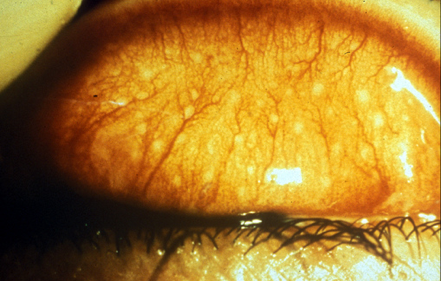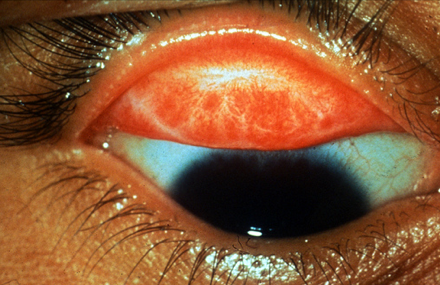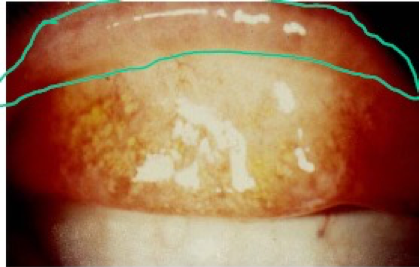Table of Contents
Overview – Trachoma
Trachoma is the leading cause of preventable infectious blindness worldwide. Caused by the bacterium Chlamydia trachomatis, the condition is most prevalent in areas with poor hygiene and overcrowding. Chronic and repeated infections over many years lead to progressive scarring of the conjunctiva, eyelid deformities like entropion and trichiasis, and ultimately corneal damage and blindness if untreated. Public health measures and the WHO-endorsed “SAFE” strategy are essential for disease control.
Definition
Trachoma is a chronic keratoconjunctivitis caused by Chlamydia trachomatis, leading to scarring, trichiasis, corneal opacification, and eventual blindness.
Aetiology
- Causative Organism: Chlamydia trachomatis
- Associated Infections:
- Chlamydia sexually transmitted infections (STIs)
- Lymphogranuloma venereum
- Neonatal conjunctivitis and pneumonia
Epidemiology & Risk Factors
- Most common infectious cause of blindness globally
- Often endemic in tropical and resource-poor settings
- Endemic in parts of Africa, the Middle East, Asia, and Australia
- Risk Groups:
- Children
- Mothers and carers
- People in close contact with infected children
- Contributing Factors:
- Poor facial hygiene
- Overcrowding
- Limited access to water and sanitation
Transmission
- Via contact with infected:
- Eye, nasal, or throat secretions
- Contaminated objects (e.g. towels, clothing)
- Flies exposed to infected secretions
- Perinatal transmission can occur during childbirth
Pathophysiology
- Chronic C. trachomatis infection → chronic conjunctival inflammation
- Progressive scarring of the upper tarsal conjunctiva
- Entropion: Inward turning of the eyelid due to scarring
- Trichiasis: Eyelashes rub against the cornea → damage
- Repeated trauma leads to corneal opacity → irreversible blindness
Disease Progression
- Asymptomatic chronic infection
- Inflammatory conjunctivitis (Active Trachoma)
- Recurrent infections → follicular & papillary inflammation
- Conjunctival scarring (TS – Trachomatous Scarring)
- Eyelid deformities (Entropion)
- Trichiasis (TT – Trachomatous Trichiasis)
- Corneal Opacity (CO) → Vision Loss
Clinical Features
Symptoms
- Conjunctivitis (red, irritated eyes)
- Chronic ocular discomfort
- Foreign body sensation
- Progressive vision loss in later stages
Signs (WHO Simplified Grading)
- TF (Trachomatous Inflammation – Follicular):
- ≥5 follicles (white dots) on the upper tarsal conjunctiva
- May also be seen at the limbus (junction of cornea and sclera)
- Follicles = lymphoid germinal centres

- TI (Trachomatous Inflammation – Intense):
- pillary hypertrophy (red papillae)
- Thickened upper tarsal conjunctiva
- Rough surface, obscured vessels

- TS (Trachomatous Scarring):
- Cicatricial changes of the upper eyelid conjunctiva
- Scarring of the upper eyelid conjunctiva

- Entropion (not part of grading but a key finding)
- Eyelid turns inward due to scarring
- ‘Rolled’ appearance of eyelid margin

- TT (Trachomatous Trichiasis):
- ≥1 lash touching the globe or history of epilation

- CO (Corneal Opacity):
- Corneal scarring leading to vision impairment

Investigations
- Visual acuity testing (e.g. Snellen chart)
- External eye exam
- WHO grading system for trachoma assessment
- Screening may include family and community evaluation
Management
SAFE Strategy (WHO)
- S: Surgery – for trichiasis and entropion
- A: Antibiotics – typically oral azithromycin (1–2 doses)
- F: Face washing – to reduce transmission
- E: Environmental improvement – sanitation and water access
Summary – Trachoma
Trachoma is a chronic, preventable eye infection caused by Chlamydia trachomatis, transmitted via contact with infected secretions or contaminated objects. Without timely treatment, repeated infections lead to scarring, entropion, trichiasis, and blindness. The WHO “SAFE” strategy (Surgery, Antibiotics, Face-washing, and Environmental improvements) is the cornerstone of prevention and treatment. For a broader context, see our Microbiology & Public Health Overview page.